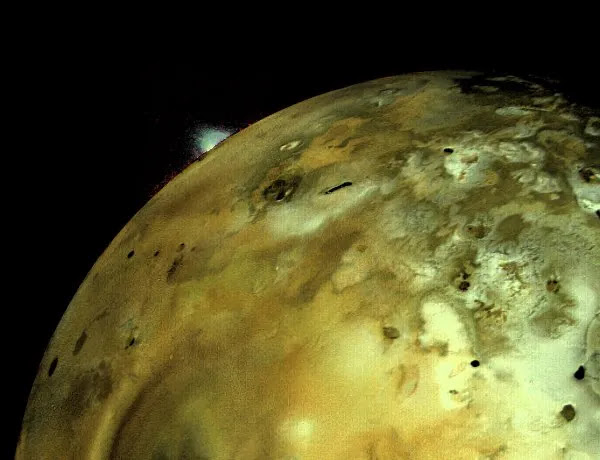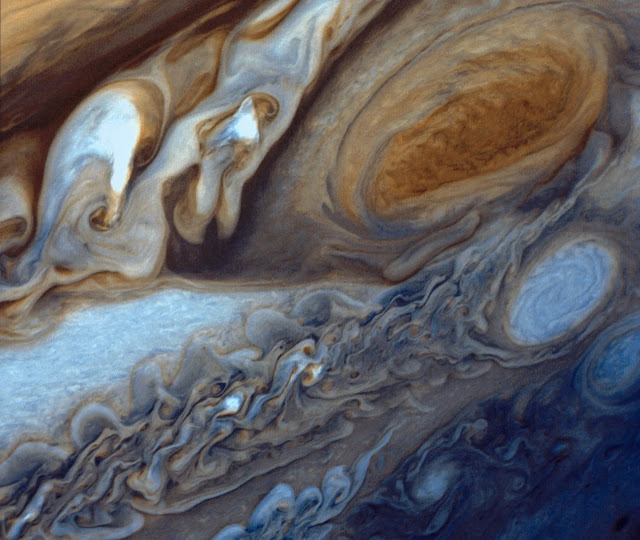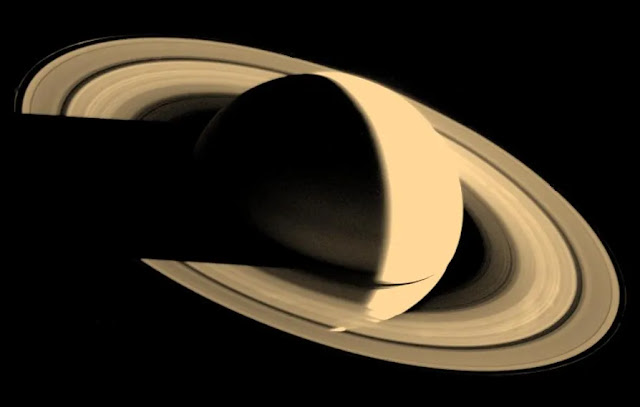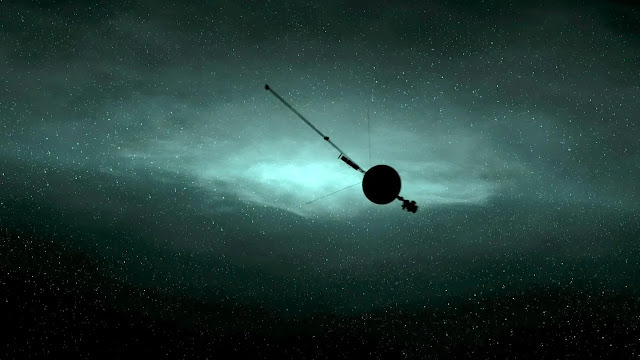Voyager 1, launched by NASA on September 5, 1977, is not just a spacecraft; it is humanity’s most distant emissary, journeying farther into space than any other object created by human hands. Its mission, part of the ambitious Voyager program, was to explore the outer planets of our solar system and beyond. Forty-seven years later, Voyager 1 continues to transmit data back to Earth, providing us with invaluable insights into the universe. This article delves into the incredible journey of Voyager 1, the celestial wonders it has observed, the iconic milestones it has achieved, and its enduring legacy.
The Grand Tour: A Celestial Alignment
Voyager 1’s journey began with a once-in-a-lifetime opportunity. In the late 1970s, a rare alignment of the outer planets presented a unique chance to visit Jupiter, Saturn, Uranus, and Neptune in a single mission. This alignment, which occurs roughly once every 176 years, allowed the spacecraft to use the gravitational pull of each planet to slingshot from one to the next, conserving fuel and speeding up its journey.
Although Voyager 1’s primary mission was to explore Jupiter and Saturn, the Grand Tour paved the way for an ambitious exploration of all the outer solar system planets by Voyager 2, launched 20 days prior to Voyager 1. To date, Voyager 2 remains the only spacecraft to have visited Jupiter, Saturn, Uranus, and Neptune.
Discoveries at Jupiter
Voyager 1 entered the Jovian system on March 5, 1979, when it made its closest approach to Jupiter, coming within approximately 174,000 miles (280,000 kilometers) of the planet’s cloud tops. This encounter allowed the spacecraft to gather extensive data and images of Jupiter and its moons. The spacecraft made five key discoveries in the Jovian system.
Key Discoveries
1. Active
Volcanism on Io
One of the most astonishing findings was the discovery of active volcanoes on Io, one of Jupiter’s moons. This was the first observation of ongoing volcanic activity on any celestial body other than Earth. Voyager 1 detected plumes erupting from nine volcanoes, some reaching over 300 kilometers (about 190 miles) above the surface. This volcanic activity is attributed to tidal heating caused by the gravitational interactions with Jupiter and its other moons, particularly Europa and Ganymede. The intense gravitational pull creates significant tidal flexing, generating heat within Io’s interior, which drives its volcanic eruptions.
2. Jupiter’s
Atmosphere and Great Red Spot
Voyager 1 provided detailed images and data on Jupiter’s atmosphere, revealing its dynamic weather patterns. The Great Red Spot, a massive storm larger than Earth, was shown to be a complex, swirling system. The spacecraft captured high-resolution images of this storm, along with numerous smaller storms and atmospheric features, contributing to a better understanding of Jupiter’s meteorological phenomena.
3. Discovery of Rings
Voyager 1 also discovered a faint ring system around Jupiter, which had not been detected before. This ring system is composed of small particles and dust, likely originating from the moons, particularly from the impacts that occur on their surfaces. The rings were confirmed through the spacecraft’s imaging systems, adding a new layer of complexity to the Jovian system.
4. Magnetic Field and Radiation Belts
The spacecraft’s instruments measured Jupiter’s magnetic field and radiation environment, revealing a magnetosphere much stronger than previously thought. Voyager 1 found that the radiation belts surrounding Jupiter are intense, with high-energy particles that pose significant challenges for future spacecraft. This information is crucial for understanding the safety of missions to the outer planets.
5. Geological Features of Moons
 |
| Ganymede’s tectonically disrupted surface, marked with bright impact sites, from 253,000 km by Voyager 1 | Image: NASA |
In addition to Io, Voyager 1 studied other Jovian moons, such as Europa and Ganymede. Europa exhibited a smooth, icy surface with few craters, suggesting a geologically active environment, possibly with a subsurface ocean. Ganymede showed signs of tectonic activity, with bright impact craters and grooves indicating a complex geological history.
Discoveries at Saturn
Following its flyby of Jupiter, Voyager 1 continued its journey towards Saturn, leaving the Jovian system shortly after its closest approach. The spacecraft’s trajectory was designed to utilize Jupiter’s gravity to assist in its path to Saturn, which it reached on November 12, 1980.
Key Discoveries
1. New
Moons and Ring System
 |
| Voyager 1 color-enhanced image of Saturn taken on October 18, 1980, 25 days before closest approach | Credits: NASA/JPL-Caltech |
During its encounter, Voyager 1 discovered five new moons orbiting Saturn, expanding our knowledge of its satellite system. Additionally, the spacecraft identified a new ring, dubbed the G-ring, which is part of Saturn’s complex ring system. The rings consisted of thousands of bands and intricate structures, including “spokes”—wedge-shaped transient clouds of tiny particles in the B-ring. These discoveries highlighted the dynamic nature of Saturn’s rings and their interactions with the moons.
2.Titan’s Atmosphere
One of the most significant findings was related to Titan, Saturn’s largest moon. Voyager 1 passed Titan at a distance of about 2,500 miles (4,000 kilometers) and revealed a thick atmosphere composed primarily of nitrogen (about 90%). The atmospheric pressure at Titan’s surface was measured to be 1.6 times that of Earth, with temperatures around -290°F (-179°C). This thick atmosphere obscured the moon’s surface, leading scientists to speculate about the presence of liquid on Titan, making it a prime candidate for prebiotic chemical reactions.
2. Saturn’s
Atmospheric Composition
Voyager 1 also provided insights into Saturn’s atmosphere, revealing that it is predominantly composed of hydrogen and helium, with about 7% of the volume being helium. This composition differs from Jupiter’s atmosphere, where helium makes up approximately 11%. The data suggested that helium might be sinking through Saturn’s hydrogen, which could explain the excess heat that Saturn radiates compared to the energy it receives from the Sun.
4. High-Resolution Imaging
Scientists learned volumes about Saturn and Titan during the twin Voyagers’ flybys in 1980 and 1981. But they also knew they had to go back. “Certainly, smoggy Titan is one of those images that led us to say we had to go back. We wanted to know what the surface looked like,” said Linda Spilker, a Voyager team member who later moved on to the Cassini mission to explore the Saturnian system in depth.
Following its closest approach to Saturn on November 12, 1980, Voyager 1’s trajectory was designed to take it out of the ecliptic plane, effectively precluding any further planetary encounters. The spacecraft utilized a gravitational assist from Saturn to accelerate its journey, allowing it to escape the influence of the solar system’s major planets.
The Pale Blue Dot
One of the most iconic images captured by Voyager 1 is the “Pale Blue Dot,” a photograph of Earth taken on February 14, 1990, from a distance of about 3.7 billion miles. The idea to capture this image was championed by the renowned astronomer Carl Sagan, who argued for the importance of taking a final look back at Earth before the spacecraft’s camera system was shut down to conserve power. Sagan believed that such an image would provide a profound perspective on humanity’s place in the universe.
As Voyager 1 turned its camera toward Earth, the planet appeared as a tiny dot, less than a pixel in size, situated within a beam of sunlight. This positioning created a striking contrast against the vastness of space.
 |
| Revised ‘Pale Blue Dot’ Image | Credit: NASA/JPL-Caltech |
In his 1994 book, Pale Blue Dot: A Vision of the Human Future in Space, Sagan eloquently articulated the significance of the photograph. He wrote, “Look again at that dot. That’s here. That’s home. That’s us.” He emphasized that this tiny speck contained all of human history, culture, and experience. Sagan’s reflections highlighted the fragility of Earth, describing it as “a mote of dust suspended in a sunbeam.” This imagery resonated deeply, prompting readers to contemplate humanity’s responsibility to care for their planet and each other.
 |
| The Family Portrait of the Solar System acquired by Voyager 1 | Image: NASA |
The “Pale Blue Dot” was part of the “Family Portrait,” a remarkable series of images captured by Voyager 1 spacecraft on February 14, 1990. It consists of 60 individual frames, which were meticulously assembled into a mosaic. The images depict six planets: Jupiter, Saturn, Uranus, Neptune, Earth, and Venus, along with the Sun as a bright point of light in the center. Notably, Mercury was too close to the Sun to be captured, Mars was too dim to detect, and Pluto was not included due to its small size and distance.
Entering Interstellar Space
On August 25, 2012, Voyager 1 made history by becoming the first human-made object to enter interstellar space. Voyager 1 crossed the heliopause, the boundary where the solar wind from the Sun slows down and merges with the interstellar medium, which is composed of particles and radiation from other stars. This transition was indicated by a notable change in the spacecraft’s environment, including a dramatic drop in solar particles and a significant increase in cosmic rays from outside the solar system. The spacecraft’s instruments recorded a 1,000-fold decrease in solar particle density and a 9% increase in galactic cosmic rays, confirming its entry into interstellar space.
Today, Voyager 1 continues to send back data from this uncharted territory, providing valuable insights into the nature of the space between stars.
Staying in Touch
NASA maintains contact with Voyager 1 through a sophisticated communication system that relies on the Deep Space Network (DSN), a global network of large radio antennas located in California, Spain, and Australia. This network is crucial for receiving data from Voyager 1, which is now over 14 billion miles (approximately 23 billion kilometers) from Earth.
.webp) |
| Locations of the Deep Space Network stations |
Voyager 1 communicates using a radio transmitter that sends signals back to Earth. The spacecraft was designed with a high-gain antenna that allows it to transmit data over vast distances. The DSN antennas are equipped to receive these weak signals, which can take over 20 hours to reach Earth due to the immense distance. The communication process involves sending routine commands from Earth to Voyager 1 and receiving scientific data collected by its instruments.
As Voyager 1 travels further into space, maintaining communication becomes increasingly challenging. The spacecraft’s power supply is diminishing, which limits its ability to operate scientific instruments and transmit data. NASA engineers have developed strategies to optimize power usage, such as shutting down non-essential systems and using the spacecraft’s radio transmitter more efficiently. These adjustments have allowed Voyager 1 to continue sending valuable data about the interstellar medium and cosmic rays.
The Golden Record: A Message to the Cosmos
Voyager 1 carries with it a unique artifact—the Golden Record, a 12-inch gold-plated copper disc containing sounds and images representing the diversity of life and culture on Earth. Curated by a team led by astronomer Carl Sagan, the record includes greetings in 55 languages, music from different cultures, and sounds of nature, along with images of humans, animals, and the planet itself. The Golden Record serves as a message of hope and a representation of humanity’s desire to connect with the cosmos.
Carl Sagan described it as a “bottle” launched into the cosmic ocean, symbolizing humanity’s quest for knowledge and understanding beyond our own world. The record also includes a map indicating Earth’s location relative to several pulsars, providing a way for potential finders to pinpoint our planet in the vastness of space.
The Future of Voyager 1
The future of Voyager 1 is both remarkable and poignant, as it continues its journey through interstellar space, far beyond the influence of our solar system. As of now, Voyager 1 is approximately 14.6 billion miles (23.5 billion kilometers) from Earth and is traveling at a speed of about 38,000 miles per hour (61,000 kilometers per hour).
Voyager 1 is powered by three radioisotope thermoelectric generators, which convert heat from the radioactive decay of plutonium into electricity. However, the power output of these generators is gradually diminishing, leading NASA to make strategic decisions about which instruments to keep operational. The mission team has prioritized the most critical instruments, ensuring that Voyager 1 can continue to collect and transmit data until at least 2025, with some estimates suggesting it could last until 2030.
Looking far into the future, Voyager 1 will eventually reach the theorized Oort Cloud in about 300 years, taking approximately 30,000 years to pass through it. In about 40,000 years, it will pass within 1.6 light-years of the star Gliese 445. Ultimately, both Voyager spacecraft are destined to wander the Milky Way indefinitely, continuing their journey through the cosmos long after their operational capabilities have ceased.
















.jpg)
0 Comments